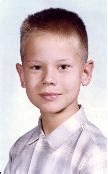I learned last year that the Guelph festival has a tradition of going out with a 24 hour sleepless jam session of programming all over town, and this year I was determined to stay up with it. My morning got started over at the Guelph Youth Music Center with a series of duets featuring Myra Melford and Jennie Scheinman. Scheinman revealed the true title of a work from one of her CDs that her producers had deemed insufficiently ethnic. Next it was back to the River Run Center's smaller concert hall for a double header. First up was Brew, featuring Reggie Workman, Gerry Hemingway and Miya Masaoka. I hadn't seen a koto being played in this context since Love Cry Want set D.C. on its ear back in the late 60s and early 70s. I'd shown a photo of a much younger Reggie Workman at the beginning of my presentation on the first day of the colloquium, and it was inspiring to hear how good he is today. Next up was a duet with Matthew Shipp and Darius Jones. This was one of the concerts I'd most been anticipating. I'd never seen either musician in person before; I've been following Shipp's music for years; and I'd been hearing more about the alto playing of Jones. I left the hall thinking it had been worth the trip just for what I'd heard already this day.

Over at the outdoor tent, where the rain had stopped and the sun had come out, there was percussion with trombone and conch shell to enjoy. Then, after dinner with friends to renew our energies, it was on to the all night marathon. First was another set of duets, Hamid Drake and Larry Ochs playing surrounded by an audience crammed into every available corner of a Yoga Center. Next was the festival headliner, a stunning solo piano concert by Abdullah Ibrahim. After that, back over to the Youth Center to watch Fred Frith do things to a guitar, applying assorted instruments to that instrument. Frith was followed by an unusual pairing of Peter Brotzmann and vibraphonist Jason Adasiewicz. I took a quick shower back at the hotel and then hot-footed it back to the Art Center where the colloquium sessions had been for a sunrise performance by the ROVA Quartet. In a turnabout, Jon Raskin herded all of us together for a photo, memorializing ROVA's first ever 6:00 AM concert. If you were bleary eyed when you walked in, you walked out wide awake and ready to meet the world. A fitting conclusion to my Guelph festival, though it wasn't festival's end -- I had to miss two Sunday performances by Myra Melford and by Charles Spearin's Happiness Project, but I was plenty happy on my way back to the lower 48.


















































































